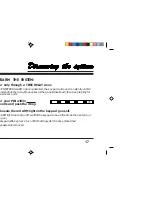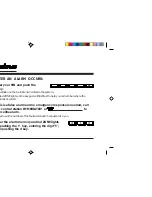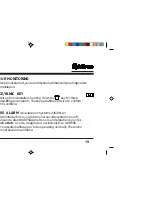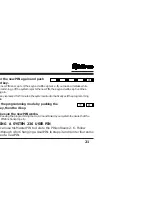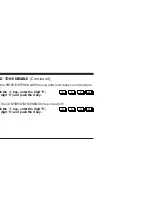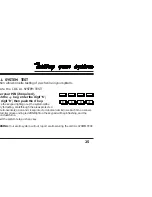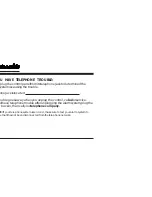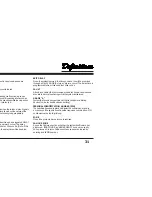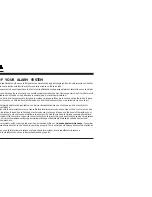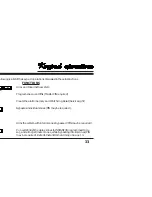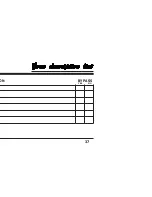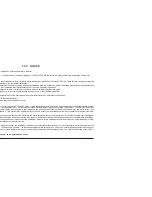
31
ALARM
A condition that occurs when the detection devices in a zone are
triggered after the system is armed.
ALARM MEMORY
Alarm conditions are stored in memory until cleared.
EXIT DELAY
Once the system is armed, the time you have to exit the premises
through a DELAY DOOR (before an alarm occurs). The delay time is
programmable from 10 seconds to 150 seconds.
F A U L T
A trouble condition that occurs when the detection devices in a zone
are violated or mafunctioning while the system is disarmed.
GRADE "A"
System that provides supervision of the transmitter or initiating
devices (i.e., detection devices and wiring).
PERSONAL IDENTIFICATION NUMBER (PIN)
The combination used to arm and disarm the control panel, and to
access any of the special functions that require a combination. PIN
numbers must be four digits long.
ZONE
One of the protected areas in your premises.
24-HOUR ZONE
A zone that is always active, whether the system itself is armed or
disarmed. FIRE, POLICE, and EMERGENCY zones are usually
24-hour zones. Alarm conditions on these zones are cleared by
entering a valid PIN number.
B Y P A S S
To take a zone out of the circuit. Bypassing malfunctioning zones
allows the rest of the system to be armed. Bypassing interior zones
allows freedom of movement inside the premises, while leaving outer
zones armed. Bypassed zones are not protected.
CENTRAL STATION
The office that the alarm system calls when there is an alarm. Signals
sent to the central station contain information about the nature of the
alarm condition, allowing the dispatcher on duty to appropriately
respond.
ENTRY DELAY
The time you have to enter the premises through a designated DELAY
DOOR and disarm the panel (before an alarm occurs). The delay
time is programmable from 10 seconds to 150 seconds. [Note: if this
option is programmed for
Long Delay
, the delay time will be doubled
(from 20 to 300 seconds).]

